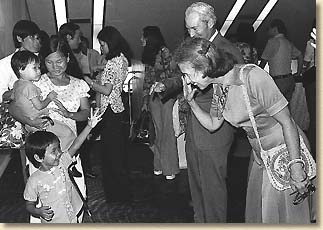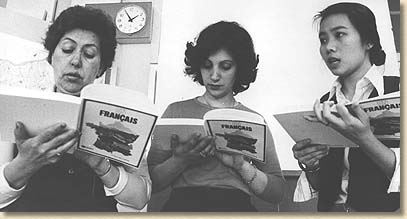 |
|||||
Two forms of sponsorship were offered in Canada: public, where the government sponsored the refugee, and private, where an organization or a group of individuals provided sponsorship. A private sponsor was responsible for providing the newcomer with material and social support for one year. The refugee would have an apartment found for him or her and would be given clothes (in particular, winter clothes), food and other essentials.
On arrival in Canada, he or she would be given a medical check-up and be enrolled in language classes (English or French). The sponsor or government official would introduce him or her to such practicalities as buying groceries, getting access to health care and finding a job.
|
|||||
| Statistics
Figures from the 1991 Canadian Census show that, of 113,595 Vietnamese-Canadians, 46 per cent (52,254) were living in Ontario; 18 per cent (20,447) were living in Quebec; 17 per cent (19,311) were living in Alberta; 13 per cent (14,767) were living in British Columbia; and 6 per cent (6, 816) were living elsewhere in Canada. Statistics also show that, of the 93 per cent (105,643) living in the cities, 32 per cent (36,350) were living in Toronto; 16 per cent (18,175) were living in Montreal; 11 per cent (12,495) were living in Vancouver; 8 per cent (9,088) were living in each of Edmonton and Calgary; and 4 per cent (4,544) were living in each of Winnipeg and Ottawa. |
|||||
 |
 |
||||
|
|
|||||
| Menu | At the Museum Discover Vietnam | History of Vietnam | Leaving Vietnam | In Canada More Information | Index | Credits |
|||||
|
|
|||||

